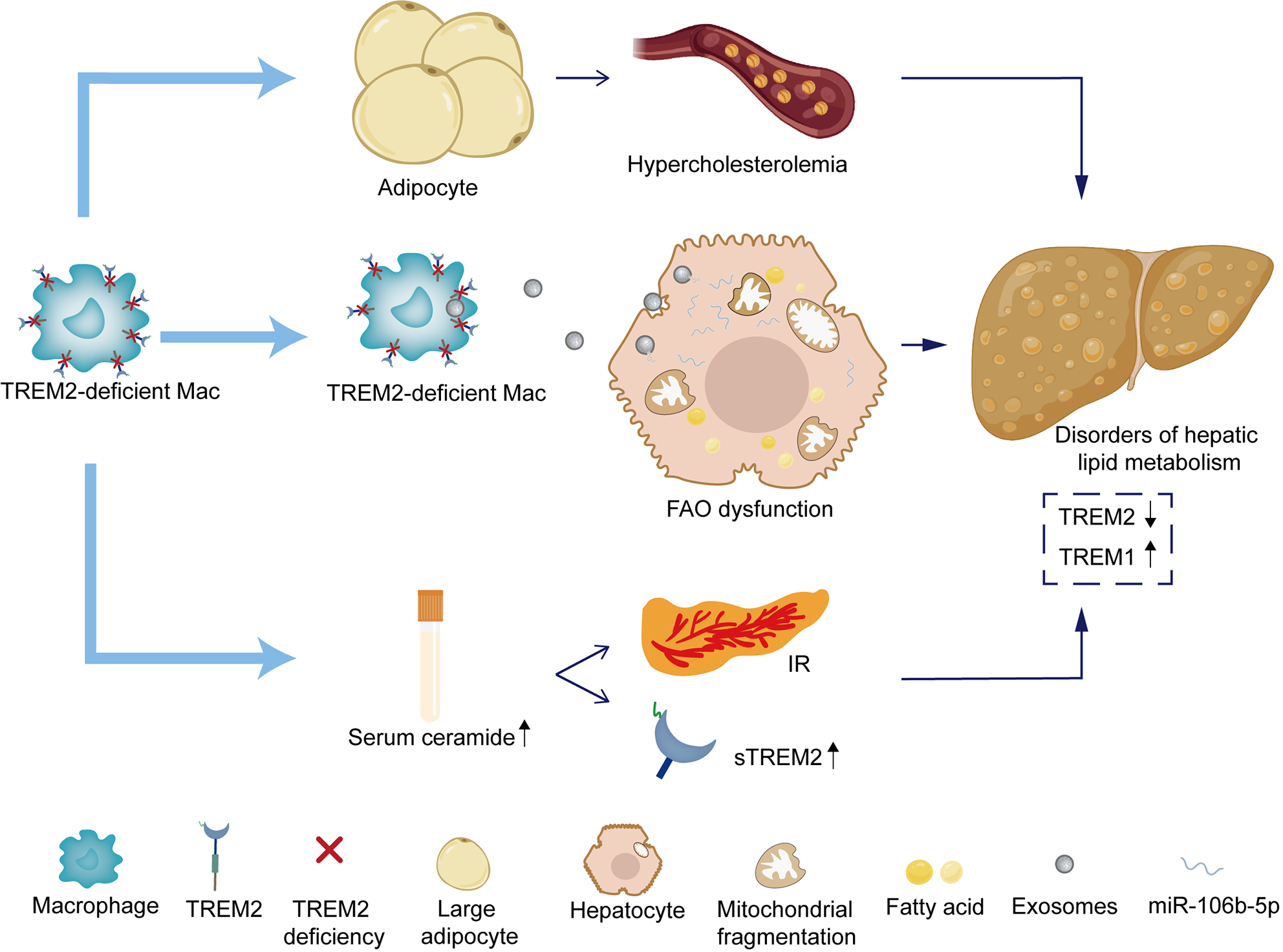Copyright
©The Author(s) 2025.
World J Hepatol. Feb 27, 2025; 17(2): 102328
Published online Feb 27, 2025. doi: 10.4254/wjh.v17.i2.102328
Published online Feb 27, 2025. doi: 10.4254/wjh.v17.i2.102328
Figure 2 Regulatory role of triggering receptor expressed on myeloid cells 2 in liver lipid metabolism.
On the one hand, macrophages lacking triggering receptor expressed on myeloid cells (TREM) 2 lead to the accumulation of hypertrophic adipocytes, causing systemic hypercholesterolemia. On the other hand, macrophages lacking TREM2 release exosomes, leading to mitochondrial fragmentation in hepatocytes and fatty acid oxidation dysfunction, accelerating the progression of non-alcoholic fatty liver disease (NAFLD). The deficiency of TREM2 may aggravate insulin resistance (IR) by increasing serum ceramide, leading to hepatic steatosis. The amount of soluble TREM2 in serum and IR are positively correlated. The increase of TREM1 and the decrease of TREM2 are involved in the pathological process of NAFLD. FAO: fatty acid oxidation; IR: insulin resistance; STREM2: Soluble triggering receptor expressed on myeloid cells 2; TREM: Triggering receptor expressed on myeloid cells 2.
- Citation: Zhang LH, Liu ST, Zhao Q, Liu XY, Liu T, Zhang Q, Liu MH, Zhao WX. Role of triggering receptor expressed on myeloid cells 2 in the pathogenesis of non-alcoholic fatty liver disease. World J Hepatol 2025; 17(2): 102328
- URL: https://www.wjgnet.com/1948-5182/full/v17/i2/102328.htm
- DOI: https://dx.doi.org/10.4254/wjh.v17.i2.102328









